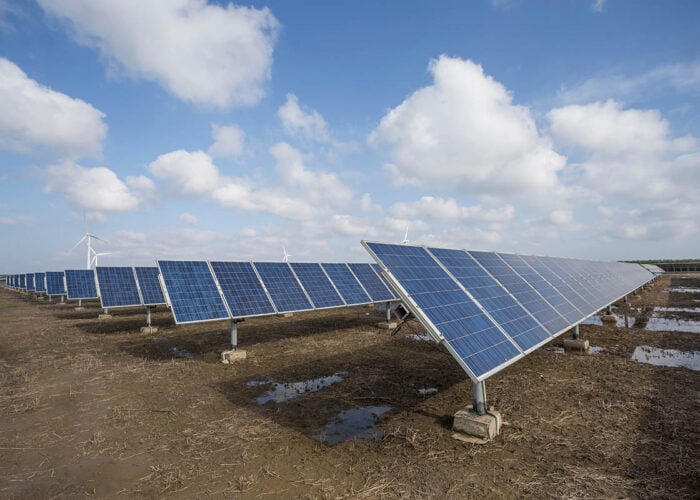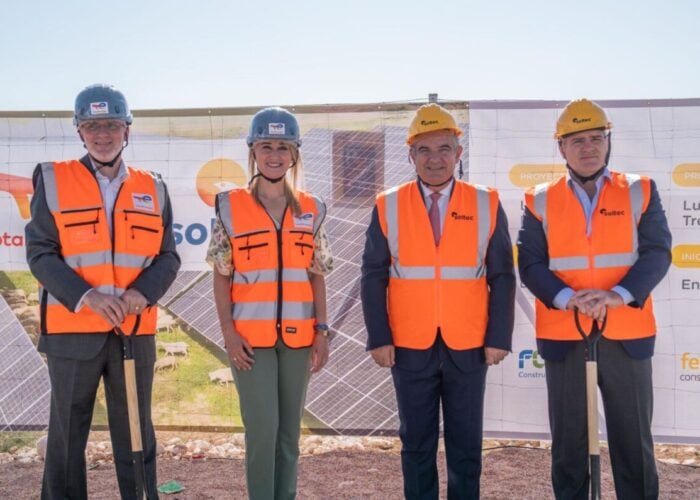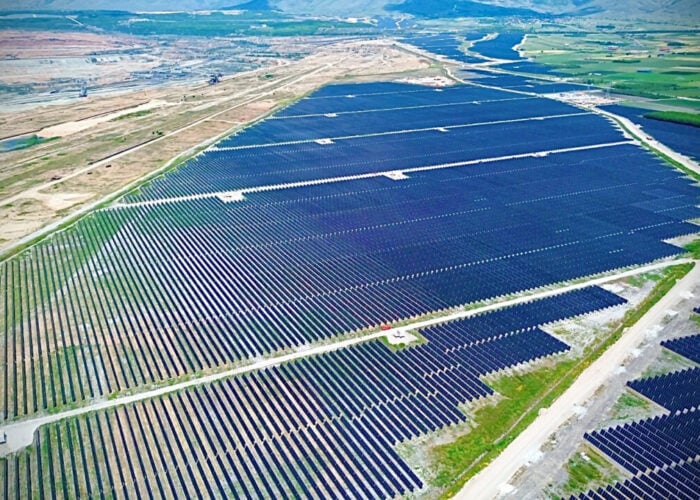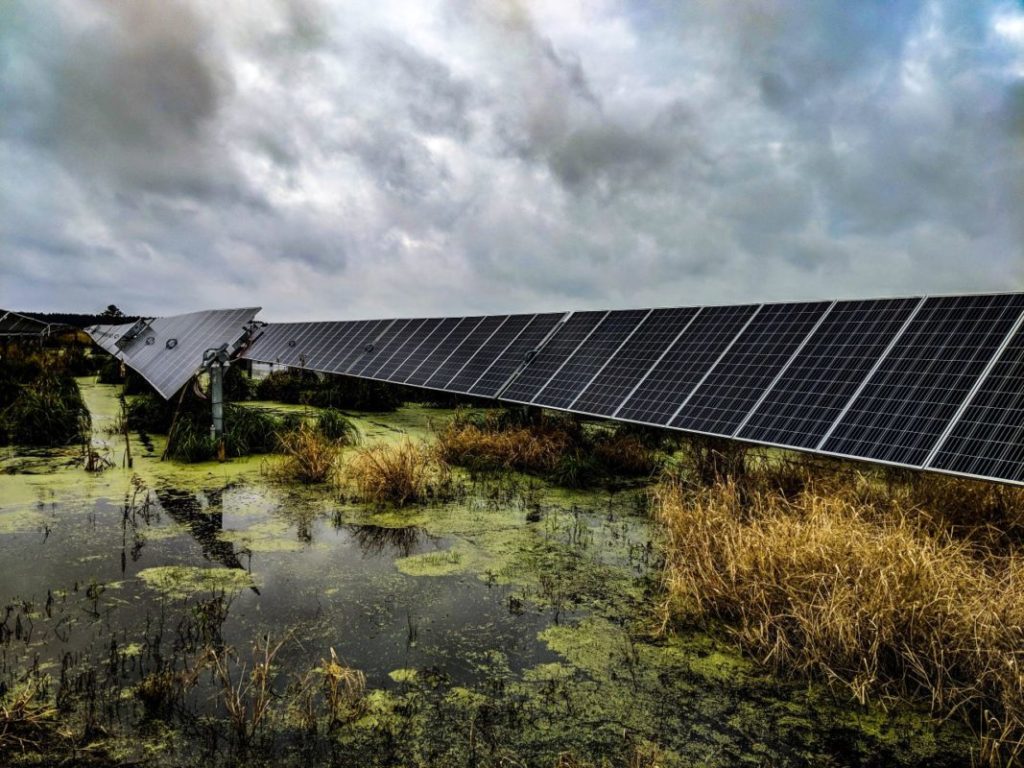
Tracker systems are emerging as a key tool in efforts to bolster PV system resilience in the face of extreme conditions. Jonathan Touriño Jacobo looks at some of the latest developments underpinning trackers’ growing status as an indispensable ingredient in solar’s continued growth.
Unlock unlimited access for 12 whole months of distinctive global analysis
Photovoltaics International is now included.
- Regular insight and analysis of the industry’s biggest developments
- In-depth interviews with the industry’s leading figures
- Unlimited digital access to the PV Tech Power journal catalogue
- Unlimited digital access to the Photovoltaics International journal catalogue
- Access to more than 1,000 technical papers
- Discounts on Solar Media’s portfolio of events, in-person and virtual
Extreme climate events are becoming more frequent across the globe, causing millions, if not billions, of dollars of damage when they occur. The solar industry is no stranger to these, with projects being damaged or affected by windstorms, hail, extreme heat, fires or flooding. In the industry’s response, trackers have emerged as a key technology, with manufacturers developing some innovative solutions – both with hardware and software – to help PV projects be better prepared and more resilient to these increasingly extreme climatic conditions.
With solar projects being developed in all corners of the globe, weather conditions will vary from region to region or even within a region depending on the latitudes. For instance, colder areas will be more prone to hail and flooding, while drier areas, such as the Atacama desert, will require a greater focus on extreme heat and winds.
Trackers and the smart software that sits behind them are an increasingly key part of a PV system’s ability to withstand the extreme weather and climatic conditions that are becoming a common feature in the era of global heating.
“Trackers play a pivotal role in PV system resilience, especially during extreme weather. Beyond the current capabilities, continuous innovation and research remain critical. Factors like maintenance protocols, material durability, and adaptive design for varying climate conditions also contribute significantly to the overall resilience of PV systems,” says PV Hardware’s (PVH) global commercial director Álvaro Casado and Ivan Arkipoff, CTO.
Similar to the fact of each region being affected by different climatic conditions, not every part of a PV system is affected the same by the different climate events, with modules more impacted by hailstorms and extreme heat, while trackers by wind, says Colleen Mahoney, vice president of product management at Array Technologies: “As module sizes continue to increase, the wind load increases on the overall tracker or fixed tilt system. Instances of destructive wind events have been seen in the industry as a result.”
Among the tracker suppliers contacted for this feature, two weather events were mostly outlined as the most problematic for the durability of a PV system: wind and hail. With another feature in this edition of PV Tech Power looking at hail on the module side, here we will look at what solutions tracker companies have come up against strong winds and hailstorms.
Three factors for a resilient power plant
Building and maintaining a resilient solar power plant could be defined by three key elements, says Nextracker’s VP of design and engineering, Alex Roedel. The first one is to select the right module technology for a given region and is “the first and most crucial step”. For instance, thicker glass can provide important protection.
The second important aspect is the capacity to stow rapidly, as stowing to the right angle and in some cases in the direction of the wind could offer more protection to the solar modules. This is where the trackers system comes into its own. “The speed of stow is critically important because every second counts and damages can rack up quickly,” says Roedel. “If it takes longer to stow, that means you need to also be able to forecast much more accurately to pre-empt extreme weather events. While wind events such as hurricanes can be forecasted days in advance, hail forecasts may come only minutes prior to a risk event.”
The final step is to implement solid emergency processes and ensure they are activated in time to help prevent damage. “If an extreme weather event causes a power outage, operators might not be able to put that technology to use,” explains Roedel. “Likewise, if controls are activated manually, someone needs to be ready to respond at the right time. Automated systems with backup power ensure that protective measures can be taken even in the event of a blackout.”
Gone with the wind
Along with hail, wind events are the most problematic for the resilience of a PV system, according to all the tracker companies contacted; unsurprisingly, trackers offering wind-resilience features are also the most sought-after products from customers. Mahoney says that wind events are one of the most discussed challenges among its customers, due to the fact that wind events reduce the energy production when modules are stowed to maintain stability of the array.
To give project owners an alternative to active wind stowing, Array provides a passive wind stow solution that minimises potential energy loss during wind events, says Mahoney. “Rather than putting the whole site in a stow position, Array’s system maintains an optimum tracking angle for the majority of the site, while only the most exposed rows rotate up to a 52° stow angle with a mechanical support at every post,” she explains.
“This unique passive wind system operates on a row-by-row basis, as needed, which optimises energy production during wind events and recalibrates when the wind eases. This mechanical system does not require power or batteries, an added bonus in cold weather environments.”
Not having to necessarily rely on manual labour is an important consideration to take into account as automation might have a better capacity to react to sudden high winds. “In instances where extreme wind events occurred, projects with non-operational trackers faced risks due to their inability to react. However, operational trackers were able to promptly respond and overcome these challenges,” says PVH.
This could also be applied to events of extreme cold, when blizzards hit a region and it would be nearly impossible for an operator to get to the solar plant. Implementing a backup power to the trackers would ensure that resiliency systems can operate even if a power outage occurs, explains Roedel.
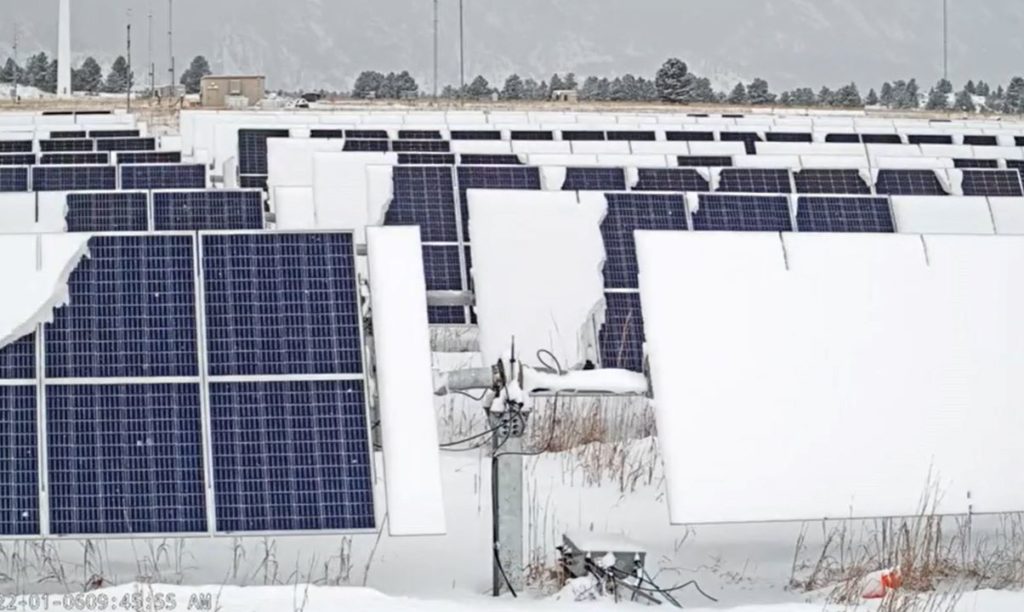
The use of automation and more recently AI is also an important tool in the software side to find solutions to enhance system resilience too. “ProInsights Neurona’s AI-driven weather predictions and the lidar solution for wind forecasting demonstrate our commitment to preemptive resilience strategies,” say Casado and Arkipoff.
Whereas Nextracker uses smart controls that consider real-time data from weather forecasts to mitigate risks and when it sends an alert to a project, the system will automatically go into a 75° position, explains Roedel.
Stow, stow, stow
Unsurprisingly, this year the solar industry has seen several products being released to help mitigate hailstorms, with Spanish tracker producer Soltec publishing recently (in November 2023) a whitepaper about it or Nextracker’s NZ Horizon Hail Pro unveiled ahead of RE+ Las Vegas in September 2023.
With the central strip of the US quite prone to hailstorms, and with hailstones’ diameter bigger than PV module certification value – according to Soltec’s whitepaper ‘Harnessing Smart Solar Tracking: Advanced Algorithms for Hail Protection’ – it is not surprising that American tracker suppliers have come up with products in the past few years to remediate to that issue.
“Taking hailstone velocity as a vector, it is easy to deduce that any action aimed at increasing inclination between this vector and the normal module surface vector, favours a reduction in module damage because impact related kinetic energy is also reduced. Thus, the most favourable panel position is that in which the normal direction is perpendicular to hail direction,” said Soltec in its paper.
Due to the fact that hail is usually accompanied by strong wind currents, it is important for solar trackers to be able to quickly respond to these, as unlike a hurricane, they can happen in a question of minutes. “The speed of Nextracker’s hail stow reduces downtime, allowing frequent stowing at minimal cost. Nextracker has had projects in Texas go into hail stow mode over fifty times per year,” says Roedel.
Similar to wind events, the ability for a solar tracker to quickly respond is crucial in order to reduce the exposure of modules to hail impacts. “Given the rapid evolution of hailstorms, it is necessary to have quick activation mechanisms, as that is an advantage when it comes to damage prevention. In the case of Soltec, our fast motor, with a final rotation speed of 20°/min, allows us to quickly position solar trackers in their hail defence position,” stated Soltec’s recent white paper.
Trackers are key to a PV system’s resilience
Even though wind and hail are the two most prominent climatic conditions that solar tracker suppliers have worked on to help improve the resilience of a PV system, these are not the only ones with hardware or software specifically designed to prevent them. Nextracker developed trackers with flood sensors that can read water depth and lift solar panels above floodwaters. “Nextracker’s solar farms received no damage after extensive flooding caused by Hurricane Matthew in 2016,” explains Roedel.
Moreover, with the democratisation of solar technology and the costs of developing a project continuing to decrease, it will be less unusual to find solar plants in colder and harsher regions. Thus, the need for solar trackers to be able to withstand very low temperatures and still be able to operate is becoming more and more critical. “Project development in extremely cold weather climates is a growing trend. One of the main challenges in such conditions is battery survivability when temperatures drop to/below -40°C. Array’s cold weather tracker package enables system operation in temperatures as low as -48°C,” concludes Mahoney.
With the prospect of climate conditions worsening in many areas and solar energy pushing into new regions where extreme conditions are the norm, expect trackers to become an increasingly indispensable enabling technology.


